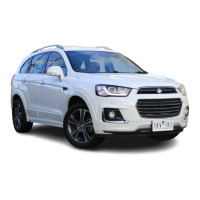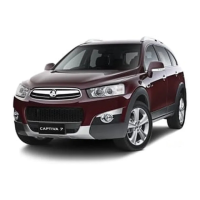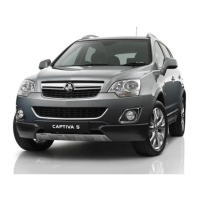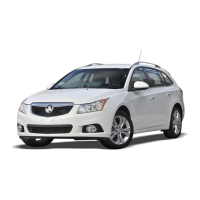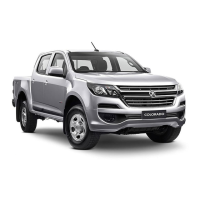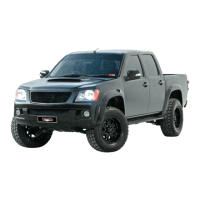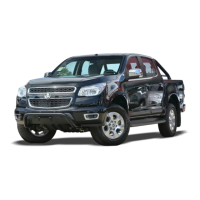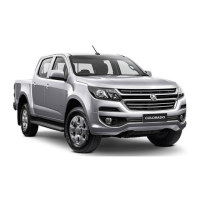4-7
Chapter 4
DRIVING
Difcult conditions
If there is any doubt about the road being passable, it is better to stop the vehicle well
before the hazard and check on foot before driving the vehicle through it.
If the ground is very uneven or rocky, do not grip the steering wheel with your thumbs
around the rim of the wheel. A sudden steering kickback due to an unseen obstacle
could cause injury to the thumb.
Ensure all luggage, and equipment is securely tied down when driving over rough or
uneven surfaces.
Snow chains
WARNING
You must not use standard snow chains if your vehicle is tted with 17 or 18
inch wheels. The tting of standard snow chains to larger size wheels may
cause damage to your vehicle. Please check with your Holden Dealer for
available alternatives.
Provided the correct snow chains are tted ensure the following are observed:
• Snow chains may only be used at speeds up to 50 km/h.
• When driving on roads that are free of snow, snow chains should only be used for
brief periods, as they will wear quickly and may snap.
•
The part of the snow chain that covers the tyre tread should not be thicker than
13 mm. The part of the snow chain that wraps around the side of the tyre should not
be thicker than 15 mm (including the chain clasp). The use of thicker chains may
cause damage to the body of the vehicle.
Mobile phones and CB radios
Mobile phones and CB radio equipment, which use an integrated antenna, may
temporarily affect the vehicle’s electronics (permanent damage is unlikely) when used
inside the vehicle, due to the interference created when transmitting.
Therefore, mobile phones and CB radio equipment that use an antenna tted to the
outside of the vehicle, should be used whenever possible.
If phones or CB radios with an integrated antenna must be used inside the vehicle,
care should be taken not to operate near the dashboard area.
Water crossing
Before crossing water it is recommended to switch off the air conditioning.
If it is necessary to drive through deep water, check the depth with a stick or by wading
into the water before driving through. Do not attempt to drive through water more than
3
00 mm deep (approximately 12 inches). Always drive through deep water very slowly,
as too high a speed would make a bow wave that may cause water to enter the engine
through the inlet system and cause major damage. Never drive into fast running water.
The force of the water can easily move the vehicle sideways, possibly into deeper water.
Always check the brakes for effectiveness immediately after driving through deep
water. Drive slowly and check the pedal force. If the brakes are wet, several rm brake
applications will dry them out quite quickly.
If the vehicle is stationary in deep water for an extended period, it should be checked
by an authorised Holden Dealer as soon as practicable for water entry to engine,
transmission, differentials and wheel bearings.
4X4 DRIVING PRECAUTIONS
CAPTIVA BOOK.indb 7 30/05/2007 12:49:30 PM
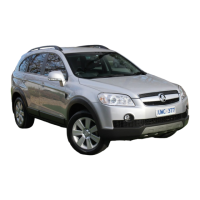
